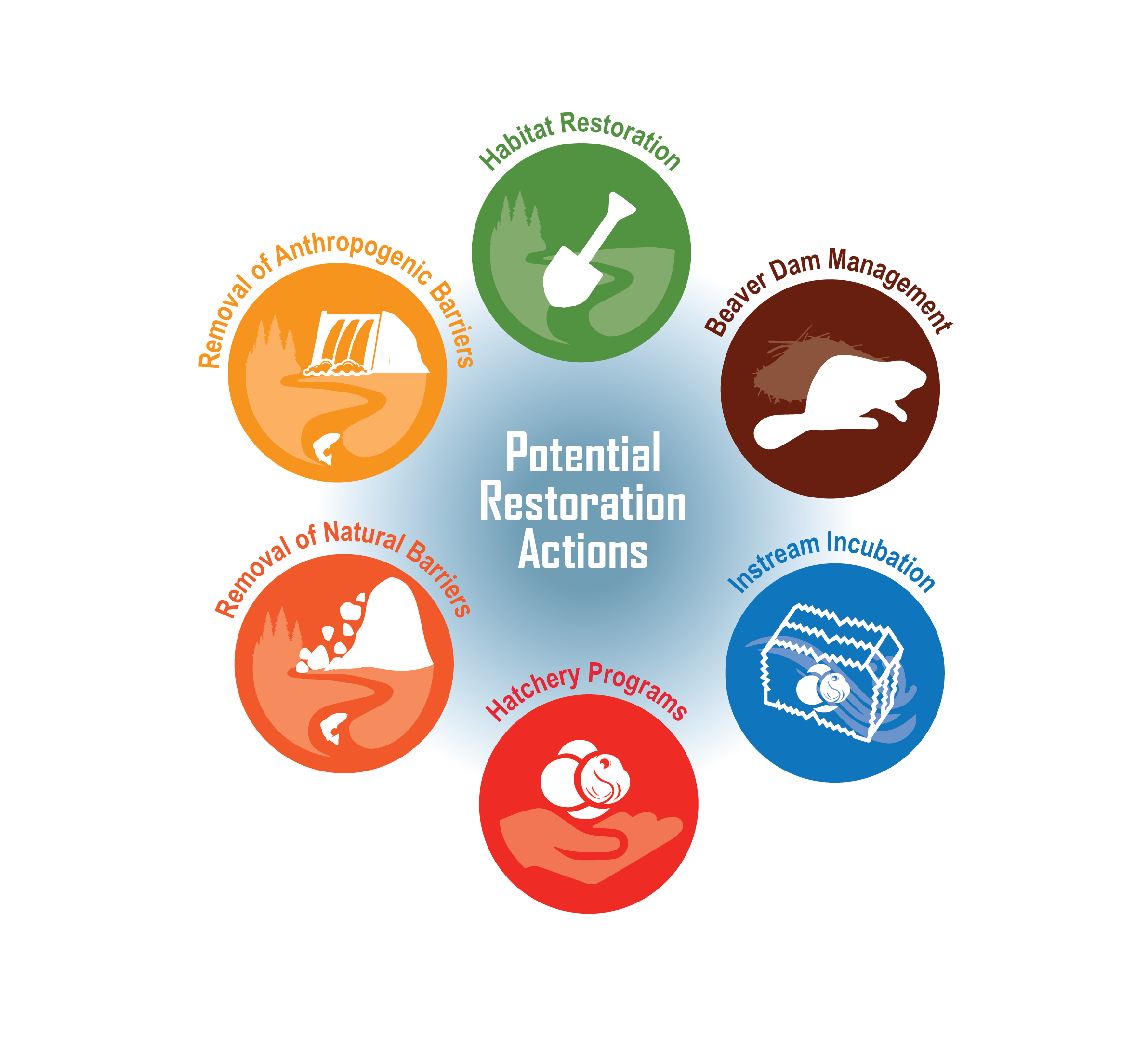Yukon River Salmon Restoration
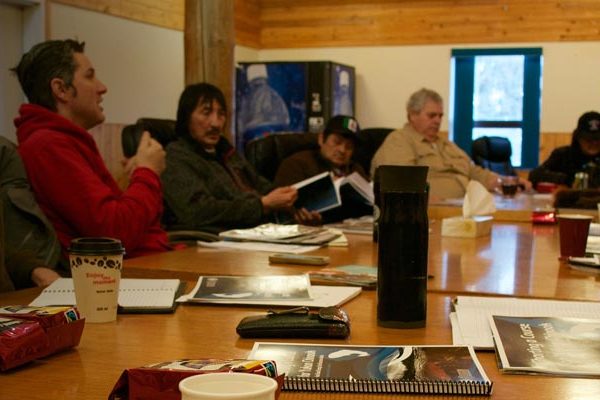
Laying a feasible, culturally grounded, and scientifically robust foundation for the restoration of Chinook salmon in the Canadian portion of the Yukon River watershed.
Location: |
Yukon River Basin, Yukon Territories, Canada; 63.287075, -138.810622 | |
Client: |
Yukon Salmon Sub-Committee (YSSC) | |
Duration: |
2015 – Ongoing | |
Team Member(s): |
Brendan Connors, Dave Marmorek, Natascia Tamburello, Marc Nelitz, and associate Mike Jones | |
Practice Area(s): |
Fisheries & Aquatic Sciences | |
Services Employed: |
Facilitation & Stakeholder Engagement, Ecological Modelling, Decision Support & Trade-off Evaluation, Capacity Development & Training, Science Communication & Knowledge Synthesis |
In recent decades Chinook salmon runs on the Yukon River in Canada have dramatically dropped to half that of historic levels
In response to these declines Yukon First Nations, for whom Chinook are of great cultural importance, have forgone or drastically reduced their subsistence harvest out of concern for the stock and desire to let it rebuild. In some cases, communities have voluntarily not fished for over a decade and watched as an entire generation grow up without experiencing the “fish camp” culture and forging first-hand connection to Chinook salmon.
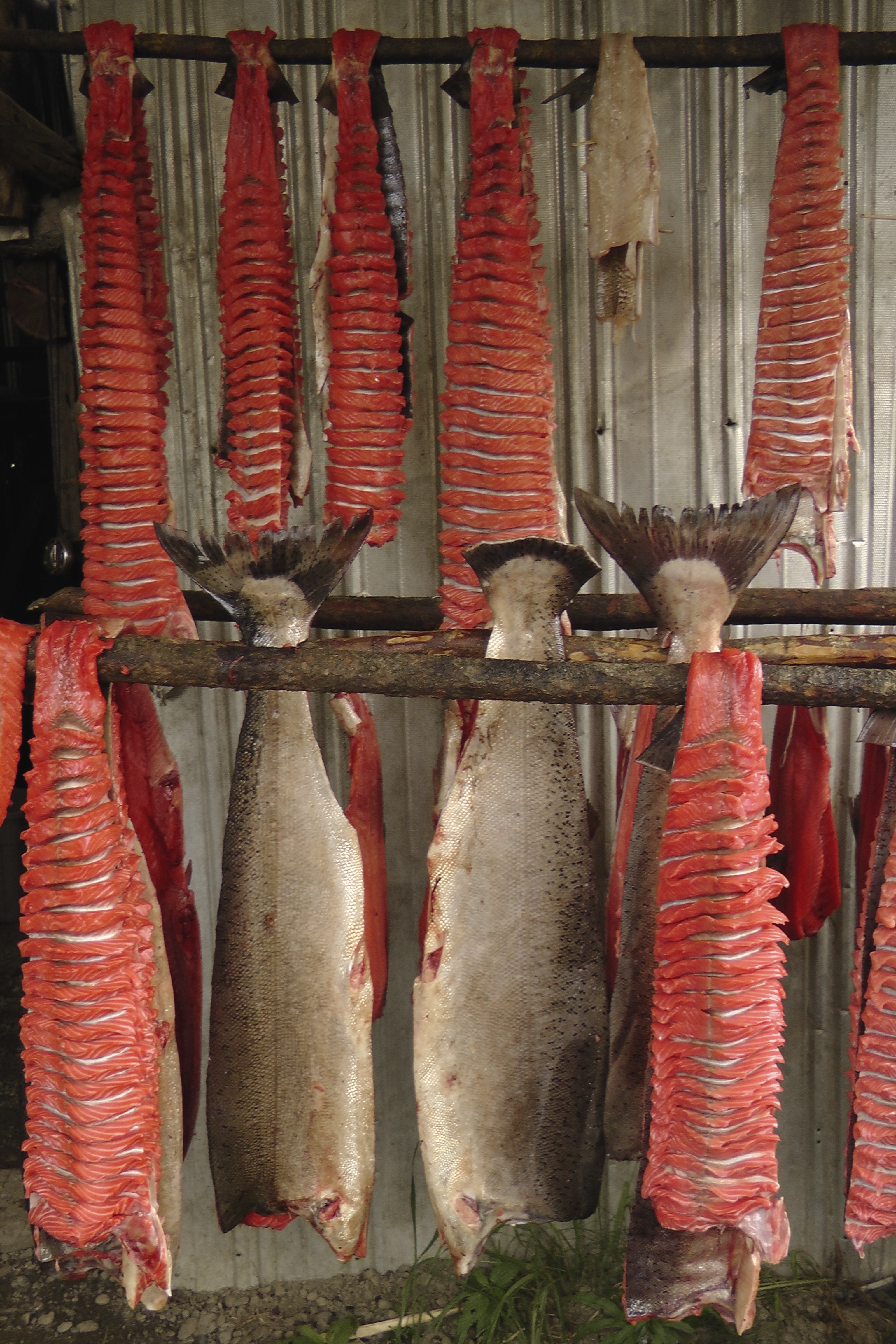
Yukon salmon drying in a First Nations smokehouse.
Given that the harvest of fish can’t be much further reduced, the Yukon Salmon Sub-Committee (YSSC), the voice of salmon management in the Yukon, embarked on a multi-year salmon restoration planning initiative. First among the many steps towards rebuilding stocks was the development of a community-value driven framework for restoring Yukon River Chinook in a way that capitalizes on the strength of modern fisheries science and applies it to the priorities and values of Yukon’s First Nations and communities.
The Yukon River: Where declines in Chinook salmon have strained the cultural fabric of First Nations
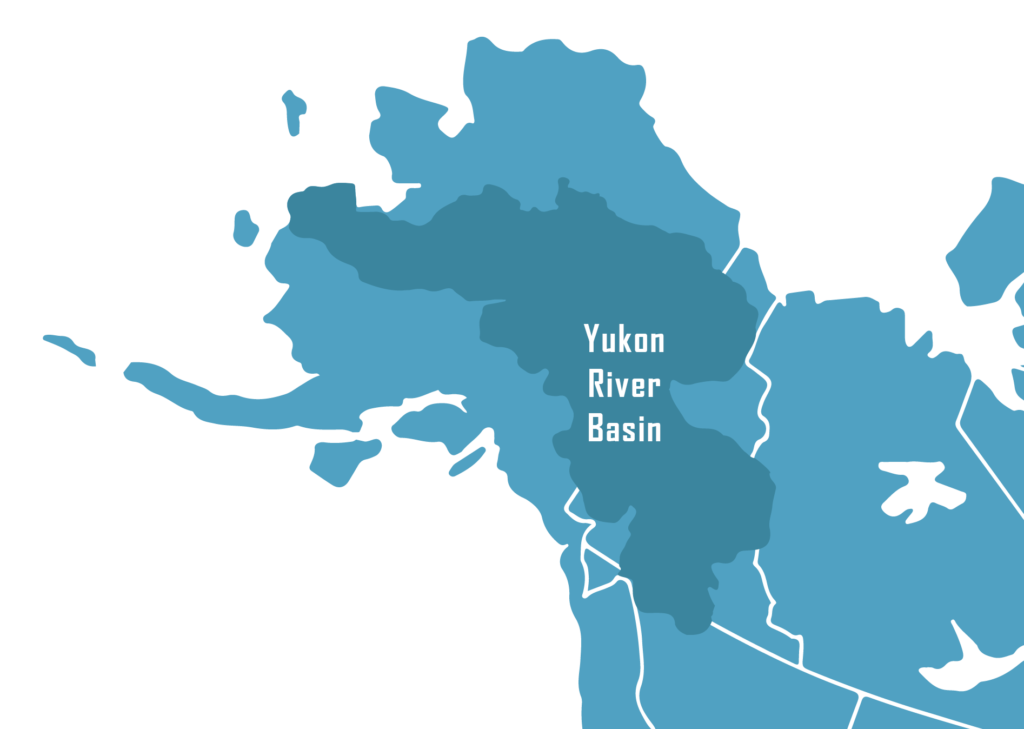
Map showing the vast extent of the Yukon River Basin, spanning nearly 3,000 km and crossing the US-Canadian border.
As the second largest watershed in North America the Yukon River basin spans an area greater than the province of Alberta. Chinook that return to the headwaters of the Yukon migrate over 2,960 km (1,840 miles) to spawn, one of longest migrations of any salmon.
These salmon have supported subsistence harvest for millennia and are at the heart of First Nation fisheries and fish camp traditions where stories, food and cultural knowledge are shared.
As increasing numbers of Chinook have failed to return to their natal waterways to spawn, the cultural fabric they historically supported has become frayed.
“With little more that can be done to reduce harvest on Yukon Chinook there has been a really strong desire on the part of communities to do something to bring the salmon back,” says Brendan Connors, the ESSA lead on this work. “Given the extensive work on stock restoration in other part of Western North America there has been a natural interest on the part of Yukon First Nations and communities to understand what can be learned from elsewhere to inform actions that can be taken to recover and rebuild Yukon Chinook.” To this end some communities are already embarking on restoration projects in the Yukon region.
Declines in salmon fuel a community-driven desire to restore stock
The science of salmon stock restoration has evolved considerably over time as salmon managers, scientists and communities have learned from past successes and failures in other coastal regions of North America. That said, it’s a relatively unexplored subject in the Yukon, where salmon populations have been healthy until relatively recently. “Knowledge about stock restoration is in its infancy up here,” says Connors. “In this case you’re operating in a knowledge vacuum and the question is how do you make defensible decisions in the face of large uncertainties when trying to address a really pressing challenge for communities in our far North.”
The key to this work has been to harness learning from across the Pacific Northwest and adapt it to the natural, institutional, social and technical contexts of the Yukon.
Lay the foundation for success by ensuring clear objectives, feasible and effective restoration actions, and sound decision-making for Chinook restoration
Any stock restoration that takes place in Canada needs to be community driven and reflect the priorities of those depending on the fish stocks.
As a result, developing a stock restoration framework based on community values was a key first step towards building a long-term strategy for restoring Yukon Chinook. This culturally-rooted stock restoration framework could then be used to develop, evaluate and prioritize potential Chinook stock restoration initiatives moving forward. It is through this lens that restoration activities can examined to discover the following: what can we do about the problem that is in line with community concerns and values, how effective might those actions be when evaluated against the communities’ objectives and what kinds of tools exist in the stock restoration toolbox to tackle them.
To that end, we worked with the YSSC and a technical committee to understand what the Chinook restoration objectives of Yukon First Nation were, what factors are most likely to be limiting Chinook populations and where there are opportunities to undertake restoration actions.
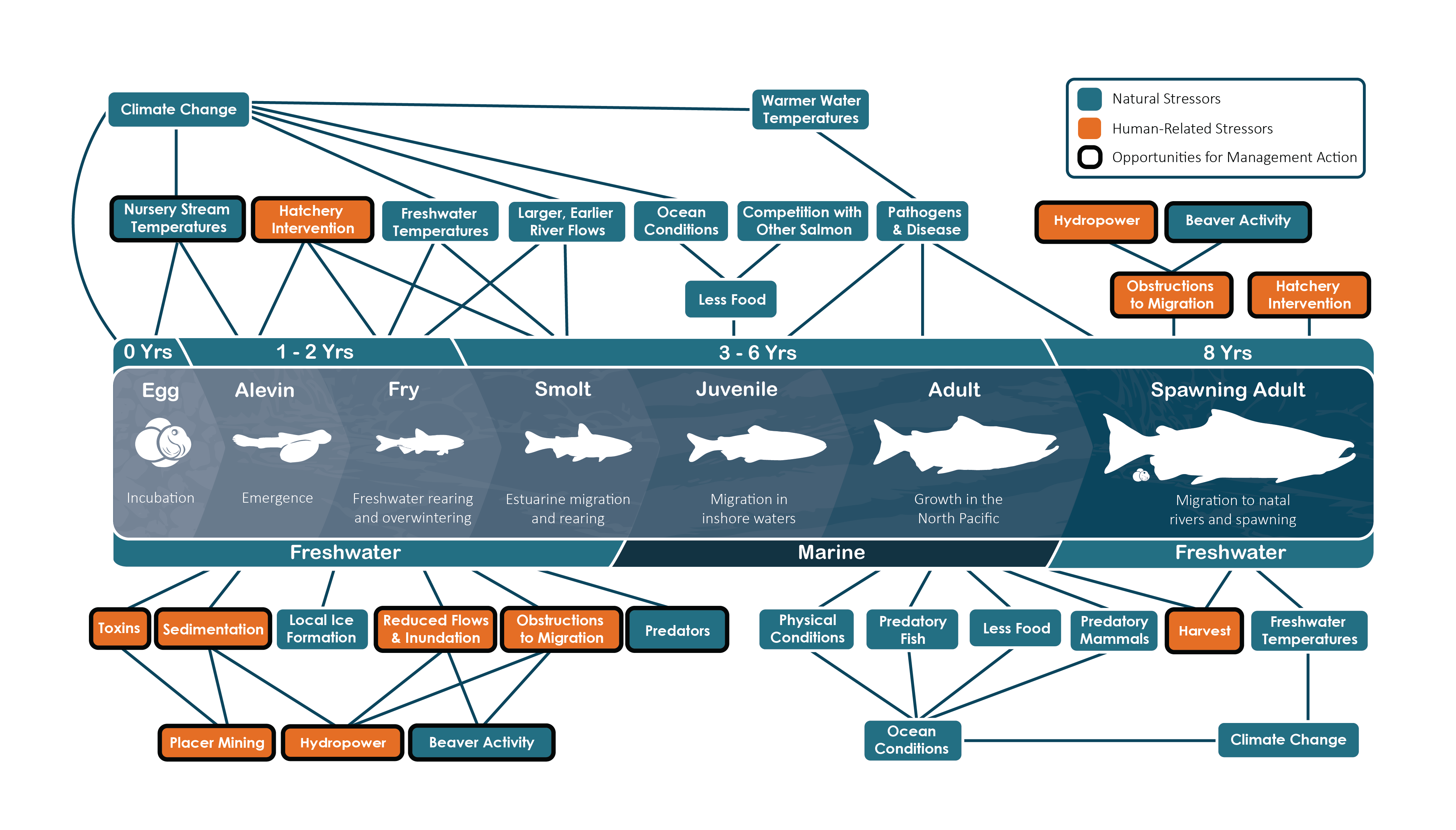
An original diagram created for our public outreach project brochure showing natural and human-related stressors thought to be influencing Yukon Chinook salmon populations across different life stages.
Next, they developed a simple prioritization framework that allowed them to compare different restoration activities — such as hatchery programs, beaver dam management, and in stream incubation — against the objectives that the Yukon First Nations wanted to achieve.
For Connors, the importance of this high-level foundational work cannot be understated. While the story is still unfolding, and stock restoration is a long-term endeavour, the earliest steps can be critical for setting subsequent steps up for success. “Our efforts have been all about trying to help communities better understand what they want to achieve with stock restoration, what kinds of tools are available to them and how likely these tools are to be successful at meeting their objectives,” says Connors. “This lays a transparent, evidence based foundation, upon which actual stock restoration-related efforts can be identified, prioritized and acted upon moving forward.
Project resources coming soon!


